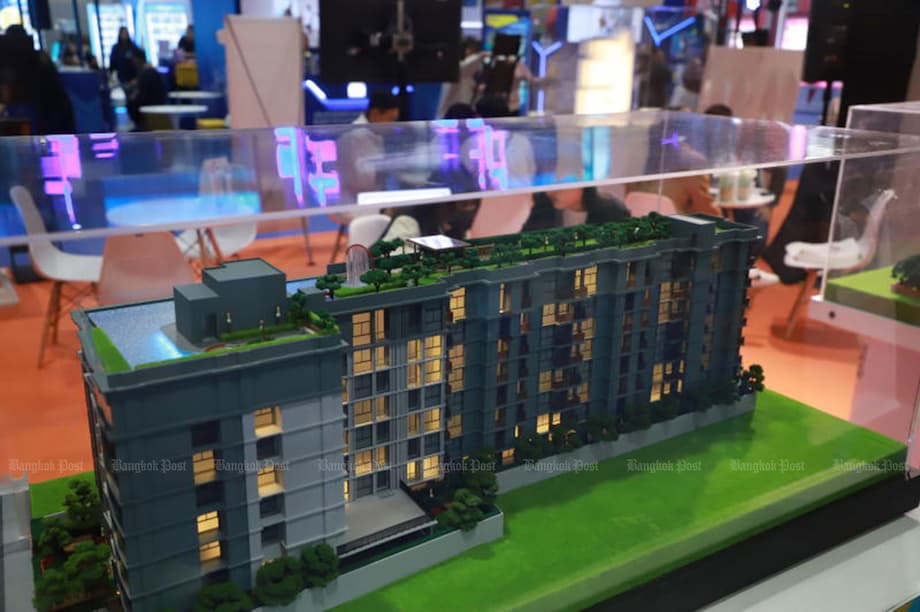Why new Bangkok condos are priced like 2015
New condominium launches in Bangkok are hitting the market with price tags reminiscent of 2015, a striking sign of how developers are prioritizing volume over margin in a fragile economy. Project sponsors that once booked margins near 30 percent are cutting them deeply to move units. The Thai Condominium Association reports that some developers, after pausing launches in the first half of the year, returned in the third quarter with aggressive pricing to stimulate sales among buyers with limited purchasing power.
Examples tell the story. A fresh launch in the Rama IV corridor opened at about 120,000 baht per square metre, compared with more than 150,000 baht for nearby buildings launched earlier. Across the river in Tha Phra, new units are being offered at 60,000 to 70,000 baht per square metre, far below the common market average north of 100,000 baht. These price points are designed to draw both investors who are prepared to wait for completion and end users who need attainable payments, even if that means developers accept thinner profit.
Pricing data from a leading consultancy shows why developers are leaning into value. Average asking prices in the central business district held around 239,475 baht per square metre in the second quarter, flat quarter to quarter but down from a year earlier. On the city fringe, asking prices slipped to about 126,897 baht per square metre, and suburban averages eased to 72,193 baht per square metre. Heavy competition and a pile of unsold inventory have kept list prices from rising, and promotions have pushed effective prices even lower in many neighborhoods.
Cost pressure has not gone away. Land values near transit lines are elevated, and the construction cost index climbed roughly 4 percent on the year. Materials from tiles to sanitary ware are more expensive, and labor costs are higher. These inputs would normally nudge new home prices up. Instead, to avoid a standstill in sales, developers are discounting, bundling freebies, and compressing margins to hit monthly payment targets buyers can meet.
Frank Khan, executive director and head of residential at Knight Frank Thailand, describes a confidence gap that is keeping many households on the sidelines.
The world is full of wars and negative news, so people are reluctant to commit. They are waiting for stronger economic conditions and political stability, which are critical factors.
That caution extends to banks, which have tightened mortgage approvals as household debt remains high. The result is a market where developers must compete on price and terms as much as on design, location, and amenities.
Where are the deepest discounts
Discounts are most visible in locations with abundant supply or where buyers have many comparable options. The recent drop in the average selling price for newly launched projects to about 89,500 baht per square metre in the second quarter points to a pivot toward lower priced inventory in outer city areas. That level compares with more than 144,000 baht per square metre in the prior quarter, a sign that developers are tilting launches toward segments with more accessible ticket sizes.
CBD versus fringe and suburbs
The central business district is holding up better than outlying areas, although even prime locations are not immune to softer demand. Average asking prices in the CBD were steady quarter to quarter but lower than a year ago. City fringe and suburban markets saw small declines in asking prices as developers responded to subdued purchasing power and the need to clear inventory. In these zones, buyers are far more price sensitive, and projects with smaller unit sizes or sharper promotions are the ones that move.
New launches or completed units
Pre sale units at new projects, especially those with long construction timelines, offer entry prices that can undercut ready to move in stock. Investors who can wait for handover may target these launches for potential capital gains as the cycle stabilizes. End users often prefer completed units, even if the price per square metre is higher, because they avoid construction risk and can occupy immediately. In both cases, the gap between the list price and the net effective price after promotions can be meaningful, so careful comparison across buildings is essential.
Oversupply and a slowdown in new launches
Bangkok entered 2025 with a large backlog of unsold condominiums. Developers slowed their pipelines and reintroduced existing stock at sharper prices, turning the city into a classic buyer market. While estimates vary by survey, several trackers agree that new launches fell sharply this year compared with 2024, with some reporting second quarter launch volumes at the weakest level since 2009. Where projects did launch, many were concentrated outside the core in order to meet affordability thresholds.
The imbalance is visible in sales ratios. In late 2024, thousands of new units hit the market but the sales rate hovered in the mid 30 percent range, below the level seen as healthy. That dynamic carried into 2025, prompting larger developers to scale back new releases, focus on clearing inventory, and hold cash. Others have diversified to low rise housing or to markets such as Phuket where foreign demand is stronger.
Mr Khan expects heavy inventory to keep shaping pricing and promotions across this year.
What we will see is an influx of unsold inventory entering the market. Developers will lower prices and offer more promotions. Like last year, it will remain a buyer’s market.
Some firms have adopted selective release strategies, bringing only parts of their projects to market to test demand and calibrate prices. That approach reduces risk when sales velocity is slow and gives room to adjust unit mix toward smaller or more affordable layouts if needed.
Why buyers and banks are cautious
Household finances are stretched. Mortgage rejection rates rose through 2024, with industry estimates placing denials at a high share of applications. Non performing loans have risen, and banks have taken a conservative stance on debt service ratios and loan to value thresholds. For many mid market buyers, that means either saving longer, buying smaller, or renting.
Transaction data confirms the slow mood. Residential property transfers were down year on year in the first half, and mortgage growth has been subdued despite central bank rate cuts and temporary stimulus measures. Fee reductions for transfers and mortgages, along with relaxed loan to value rules, are meant to ease the burden on first time buyers. Credit standards remain strict, so the lift from policy has been incremental rather than transformative.
Developers face their own financing test. Debentures coming due have raised refinancing risks, and listed developers report sizable long term debt. That pressure creates more urgency to convert inventory into cash. It also explains the prevalence of hard discounts, free furnishings, and flexible payment plans designed to keep sales flowing even when approval rates are lower.
Segments that resist the slump
Not all corners of the market are weak. Prime and super prime condominiums continue to post strong sales, with many projects reporting take up rates above 80 percent. Units priced from roughly 320,000 to 500,000 baht per square metre and branded residences anchored by top hotel names still attract high net worth buyers. Downtown product with rare attributes, such as large two and three bedroom layouts, remains in short supply, and sales of ready to move in downtown units have been strong.
Demand is also supported by renters. Bangkok’s expatriate population rose in 2024, and the rebound in tourism has kept the rental market active in key districts. Gross rental yields around 6 percent are achievable in many segments, which appeals to investors looking for income while they wait for capital values to stabilize. In the prime segment, rents have risen across several consecutive quarters as expats and corporate tenants return to the city.
Foreign buyers and expat driven rentals
Foreign buyers account for a meaningful slice of condominium activity in Bangkok by both unit count and transaction value. Chinese, Myanmar, Russian, and European buyers are present in the market, although volumes ebb and flow with sentiment and macro conditions. Near transit nodes and in lifestyle locations along the river or in Sukhumvit, foreign and domestic demand often converges, keeping pricing more resilient than in purely suburban projects. Developers catering to this group have emphasized quality, larger floor plans, service, and branding.
Safety concerns and sentiment
Confidence in high rise living came under extra scrutiny after regional tremors early this year. While Thailand’s building codes and engineering standards are designed to manage seismic risk in Bangkok’s soil conditions, social media discussions and consumer surveys showed some buyers placing greater weight on structural design, certification, and maintenance records. Developers have responded with more detailed communications about building safety and with on site demonstrations of engineering systems. In a market where buyers already need more reassurance on price, clear information on construction quality has become another factor that can support sales.
How to shop in a buyer market
With developers sharpening pencils, buyers have unusual leverage. The challenge is separating a genuine bargain from a false economy. A few practical steps can help.
- Get bank pre approval early. Knowing your borrowing limit saves time and strengthens your negotiating position with sales teams.
- Focus on location quality. Transit access, established amenities, and a strong neighborhood rental market matter as much as price per square metre.
- Compare net effective prices. Weigh cash discounts, transfer fee support, furniture packages, and payment plans, then convert them into a net number you can compare across projects.
- Read the fine print on timelines. Confirm construction milestones, escrow protections, and refund policies in case of delays.
- Assess developer strength. Review the developer’s track record, delivery history, and upcoming debenture maturities to gauge execution risk.
- Check building safety and specifications. Ask for structural certificates, materials lists, and warranties. Visit completed projects by the same contractor where possible.
- For investors, test the rental story. Verify achievable rents from nearby comparables and deduct service charges to estimate net yield.
What could change the trend
Several levers could gradually improve sentiment. Lower interest rates would reduce monthly payments, helping approval rates at the margin. Continued fee reductions and targeted support for first time buyers can bring fence sitters back. Growth in the expatriate base and steady tourism would support the rental channel, which in turn encourages investor purchases. Supply discipline also matters. With fewer launches and more selective releases, absorption can catch up, and the sheer size of the unsold pool can shrink.
Macro conditions will set the tone. Thailand’s economy is on a slow growth path this year with contained inflation. Structural issues such as an aging population and high household debt remain constraints. Even with that backdrop, developers have projects ready and marketing budgets set, so bursts of activity are likely whenever interest rates dip or policy incentives are extended. Buyers who have done their homework can take advantage of windows when discounts are deepest.
Key Points
- New Bangkok condo launches are being priced near 2015 levels as developers accept thinner margins to stimulate demand.
- Examples include 120,000 baht per square metre in Rama IV and 60,000 to 70,000 baht in Tha Phra, well below recent neighborhood peaks.
- Asking prices are flat to slightly lower across many areas, with city fringe and suburban markets competing hardest on value.
- Oversupply and tighter mortgage approvals are suppressing sales, keeping 2025 a buyer market with heavier discounts and promotions.
- Some surveys report second quarter launch volumes at their lowest since 2009, as developers slow pipelines and reintroduce existing stock.
- Policy supports such as fee reductions and relaxed loan to value rules help at the margin, but bank credit remains conservative.
- Prime and super prime segments, along with rare large downtown units, continue to sell well, supported by affluent buyers and brand strength.
- Rental demand is firming, aided by expat growth, with gross yields near 6 percent in many locations.
- Developers are shifting toward selective releases and more affordable outer city launches, reflected in a lower average selling price for new projects.
- Improved confidence, lower interest rates, and supply discipline would help absorption stabilize through the next few quarters.




